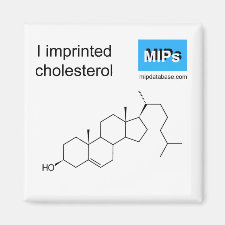
Authors: Mendonša PV, Serra AC, Silva CL, Sim§es S, Coelho JFJ
Article Title: Polymeric bile acid sequestrants - Synthesis using conventional methods and new approaches based on ''controlled''/living radical polymerization.
Publication date: 2013
Journal: Progress in Polymer Science
Volume: 38
Issue: (3-4)
Page numbers: 445-461.
DOI: 10.1016/j.progpolymsci.2012.09.004
Alternative URL: http://www.sciencedirect.com/science/article/pii/S0079670012000895
Abstract: Polymeric bile acid sequestrants have received increasing attention as therapeutic agents for the treatment of hypercholesterolemia. These materials are usually cationic hydrogels that selectively bind and remove bile acid molecules from the gastrointestinal tract, decreasing plasma cholesterol levels. Due to their high molecular weight, the action of bile acid sequestrants can be limited to the gastrointestinal tract, avoiding systemic exposure, which constitutes an advantage over conventional small-molecule drugs. Different polymers, such as vinyl polymers, acrylic polymers and allyl polymers have been used to prepare potential bile acid sequestrants based on conventional polymerization techniques. Also, much effort has been devoted to understanding the structure-property relationships between these polymers and their ability to bind bile acid molecules. The efficacy of these polymeric drugs can be ascribed to five major variables: (i) the density of cationic charges, (ii) the length and distribution of the hydrophobic chains, (iii) the polymer backbone flexibility, (iv) the degree of cross-linking and (v) the polymer shape. This review summarizes the major synthesis pathways that are employed in the preparation of this type of polymer therapeutics and the polymer structural key factors that are of relevance to enhanced therapeutic efficacy. Herein, new synthesis approaches, based on ''controlled''/living radical polymerization techniques, are highlighted
Template and target information: Review - polymeric bile acid sequestrants
Author keywords: Bile acid sequestrants, living radical polymerization, cholesterol, drug discovery, polymers



Join the Society for Molecular Imprinting

New items RSS feed
Sign-up for e-mail updates:
Choose between receiving an occasional newsletter or more frequent e-mail alerts.
Click here to go to the sign-up page.
Is your name elemental or peptidic? Enter your name and find out by clicking either of the buttons below!
Other products you may like:
 MIPdatabase
MIPdatabase









